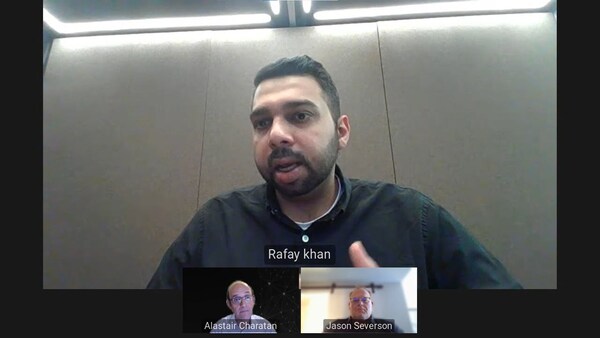
On 6 March 2024, Supply Chain Talk host Alastair Charatan was joined by Rafay Khan, Supply Planner Consumer Product Division UK&I, L’Oréal; and Jason Severson, Senior Director Supply Chain, GTM, Archlynk
Views on news
Kraft Heinz is building an internal generative AI app, known as KraftGPT, for employees to obtain quick insights into such things as product sales. The app is “kind of like an ‘Ask Me Anything’ app” that employees can query. The company joins such CPGs as Colgate-Palmolive and Johnsonville in developing genAI copilots for their organizations.
These co-pilots are more advanced as they can go beyond answers to what and can also explain why and how. Although it takes a lot of experts to build these GPTs, the technology is available for smaller organisations as well. It’s finding a good use case for available technology with value creating potential that SMEs may find more challenging. Benefits of deployments, however, will show even in the case of small scale projects and quick wins can be followed by upscaling. Another area where global companies have an edge is their access to huge amounts of data through their systems. What’s even more important is that in ERP systems, all the data and product traceability is available in real time, which also empowers the company to respond to unexpected events effectively as they happen.
Automation of order management is another capability that these systems provide, and they have been great help when companies have been checking how inventories are affected by the Red Sea crisis and where alternative procurement sources are.
How integrated ERP systems can help manage risks in supply chains
Integrated ERPs, first and foremost, provide visibility for the company including the data provenance. Other useful tools include data visualisation software, such as Power BI, where you can see in an 18 month forecast what risks are to be expected – e.g. orders that haven’t been forecast – and sends alerts to the procurement or manufacturing team to produce more in order to meet rising demand. Weekly checks can also be made to see changing global trends that affect demand. Automation in this area means that AI can make the necessary adjustment to a new situation either by itself or by offering recommendations regarding the shifts to be made. That said, in warehouse management systems, the implementation of AI-driven automation managing volumetric discrepancies is in its early days.
Automation can help with handling new and old trade barriers too. Delays due to customs clearance must be factored in in order to be able to meet delivery times. Integrated ERP systems contain all the information necessary for customs declaration, which means that the shipper has all the data to hand. Using third parties is helpful, but there is a business case for shippers handling the documents themselves. For, if something happens, the shipper will be held liable even with a third party involved, and the shipper is to supply all the data to the third party anyway.
Working with registered suppliers can ensure that their supply chains are validated by third parties as far as compliance with labour laws is concerned. When onboarding suppliers, their vetting against the “naughty list” can be automated. In a similar manner, sales and purchase orders can also be vetted automatically. The US’s UFLPA Act, however, has taken compliance one step further to include suppliers’ suppliers as well. ERP systems can do the first-tier suppliers level but, in order to comply with UFLPA, further due diligence tools are required.
The panel’s advice
- As a small business, you don’t need to buy SAP software as other, smaller ERP systems will meet your needs too.
- If you deploy SAP, it’s modularity will make it easy to extend its capabilities.
- Before building a system, go back to basics and ensure that, however you build your construct, the data that goes into it is correct.



